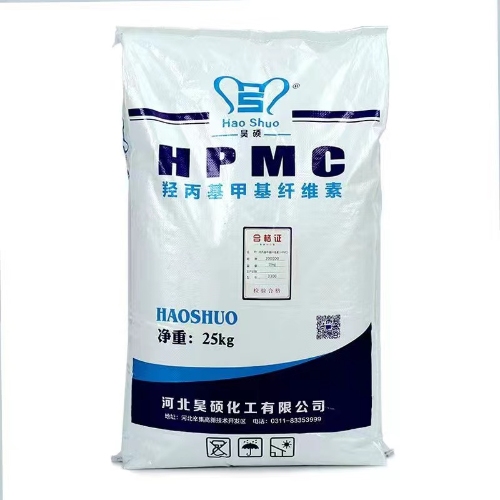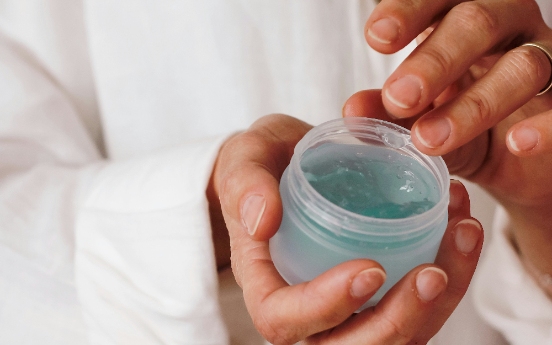More than 70% of premium shampoos and lotions utilize a plant-based asset for silky smooth performance and gentle irritation.
As a formulator, you face the challenge of balancing safety while avoiding synthetic ingredients which would turn off eco-friendly consumers. Most stabilizers are heat sensitive or environmentally unfriendly.
That’s where HPMC in Personal Care excels. Hydroxypropyl methylcellulose (HPMC) a polymer derived from plants resolves these issues. It functions as a non-toxic thickening agent and foam stabilizer in shampoos, and acts as a film former in moisturizers as well as foaming products.
Keep reading to discover important HPMC uses in product enhancement and advanced sustainability.

Celulose derived from wood pulp serves as a HPMC raw material. It undergoes a modification step via etherification using propylene oxide and methyl chloride. During the modification, methyl and hydroxypropyl groups are added to the cellulose backbone. The resulting compound is hydroxypropyl methylcellulose. The outcome is a water-soluble polymer with plant origins which still retains its elements. This modification makes sure that the final product will blend well with natural formulations.
HPMC’s non-ionic nature means it does not carry any electrical charge and so does not react with products’ salts or with surfactants that are electrically charged. Its solubility properties are interesting because it is only partially soluble in cold water but hot water does not dissolve it at all. When heated further, it reaches a temperature whereby it as a result reversibly gels. These gels can be cooled to become soluble again. This thermal response is utilized to control viscosity for shampoo products where the viscosity is sometimes required to be lower.
We will look into Practical Uses of HPMC now that its chemical aspects are known and we will start with formulations.
To achieve this increase in viscosity, HPMC forms hydrogen bonds with water molecules. Heating the product will break these bonds, and lower the viscosity of the solution. Cooling allows the thickening action to be regained. Elevation in temperature followed by lowering temperature will result in increase consistency control. This behavior permits great precision for shampoos and lotions.
In cleansing products, HPMC extends foam longevity by reinforcing the bubble walls. It allows shampoos and bubble baths to sustain bubbles for longer. HPMC is also an emulsifier. It binds lipid and aqueous portions in creams and serums, preventing them from separating. The stabilization guarantees the texture remains uniform throughout the product’s shelf life.
HPMC coatings are flexible and retain moisture, forming protective barriers on skin and hair. These coatings mitigates water loss and fortifies hydration in lotions and creams. Furthermore, the film protects against environmental irritants while also allowing skin to breathe because it does not block pores.
These core functions of HPMC can be applied to formulate products using the polymer which we will review below.
HPMC modified hair care products for the better. The polymer reduces irritation by encapsulating the scalp and preventing harsh surfactants from coming in contact with the skin. During washing, HPMC improves slip allowing hair to be detangled easily. It stabilizes essential oils incorporated into the products which averts separation of fragrance from active ingredients in shampoos.
HPMC modifies the feel and performance of skin care products. In the case of creams and lotions, it improves texture by adding a cushion which smoothens application without greasiness. Moreover, some face masks use HPMC due to its film-forming ability which boosts moisturization. It also helps in retaining water to the skin surface to prevent dehydration during treatment.

The use of HPMC in skin care products as face wash, body wash or liquid soaps has no comparison as it excels in all cleansing systems. The use of body wash and liquid detergent is better with the use of HPMC as it thickens surfactants resulting in richer lathers. Most importantly, its effectiveness in cleaning is unmatched. The polymer maintains foam stability and at the same time allow surfactants to effectively lift dirt.
HPMC for oral care helps suspend_abrasives in toothpaste ensuring even scrubbing power while its use. To enhance makeup wear, HPMC is used in color cosmetics by forming flexible films. The pigment is locked onto skin and can resist smudging even when exposed to humidity.
Apart from performance, HPMC focuses human and ecological safey which is critical in nowadays personal care products.
With HPMC being non-toxic and hypoallergenic, its safety and usage is way better compared to other substances. Studies have shown that even in high concentrations, there is zero skin iritation which makes it safe for sensitive skin. It shows zero allergenicity when subjected to patch tests. The polymer suffers no damages due to neutral pH and other non-reactive substances. Hence no redness or itching is expected after application.
HPMC biodegrades entirely through microbial action in soil or water, with no microplastics or toxic residues left behind. Unlike synthetic thickeners, HPMC’s biodegradation happens within weeks, marking a positive eco-impact. This is however in alignment with global persistent pollutant regulations. Brands employing HPMC are able to achieve their eco-friendly milestones while maintaining effective performance.
Before assuming safety, HPMC grade selection is crucial for achieving the desired results in your formulations. Safety and proper grade selection goes hand in hand.
Low viscosity grades (20,000–40,000 mPa·s) work best for sprays and serums because they offer clarity and prevent sagging during application. High viscosity grades (150,000–200,000 mPa·s) have lended to the success of heavy creams and lotions as they provide significant thickening while maintaining ease of spread.
HPMC upholds compatibility with common formulation agents and binds effectively with anionic surfactants such as sodium lauryl sulfate (SLS). The polymer’s resistance to salt-induced thinning is important for mineral-rich products and its compatibility with polymers like polyvinyl alcohol (PVA) makes it blendable without phase separation.
In personal care applications, HPMC serves as a thickening agent and safety-focused polymer which makes it indispensable. Its unique chemistry provides high precision viscosity control, foam stabilization, and skin protection in shampoos, creams, and detergents. Most importantly, HPMC in Personal Care does not cause harm to health or the environment while delivering these benefits.
Fill out the form to order a sample and evaluate HPMC’s effectiveness in your formulations.
Yes. Rigorous toxicology studies confirm HPMC causes zero skin irritation or allergic reactions. It is hypoallergenic and suitable for eczema and sensitive skin.
HPMC does not performs synthetics such as acrylic polymers in terms of biodegradability. Unlike HPMC, it takes weeks to naturally break down. Without the risk of turning into microplastic pollutants, HPMC maintains its efficacy alongside diverse pH levels.
Related News and Blogs
24
Aug., 2024
Let's meet Indonesia Coatings Exhibition 2024
The 10th Paintistanbul & Turkcoat Fair will be held at the Istanbul Exhibition Center in Turkey from May 8th...
19
Nov., 2021
What Causes A Cracked Putty Layer?
The one-off scraping thickness of the putty is directly proportional to the curing shrinkage strength, which increases in proportion to the tendency of the putty to crack.
04
Nov., 2021
Whether you are carrying out small repairs or building walls, knowing how to mix the mortar needs to be precise. If the mortar is too dry, the blocks will not stick together properly. If it is too wet, flowing mortar can spill out of the joints, resulting in wasted time and materials for clean-up.
25
Oct., 2021
The Effect of Winter Construction Temperature on Tile Adhesives
As we all know, tile adhesive is generally made from cement and mixed with various additives. It is mixed with water at the construction site and then applied to the wall or floor.

Get in Touch
Interested in how our HPMC can enhance your personal care formulations? Contact us to request a free sample and experience the superior quality of our cellulose ether products.